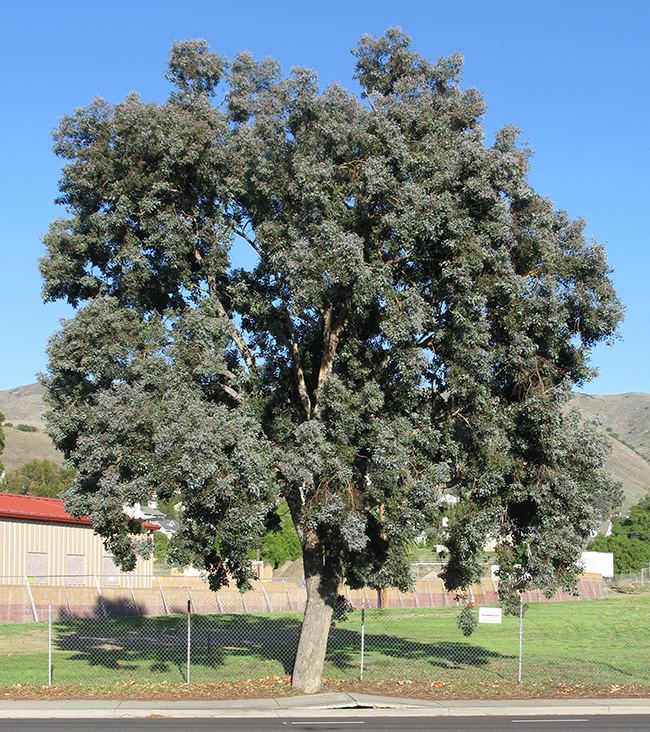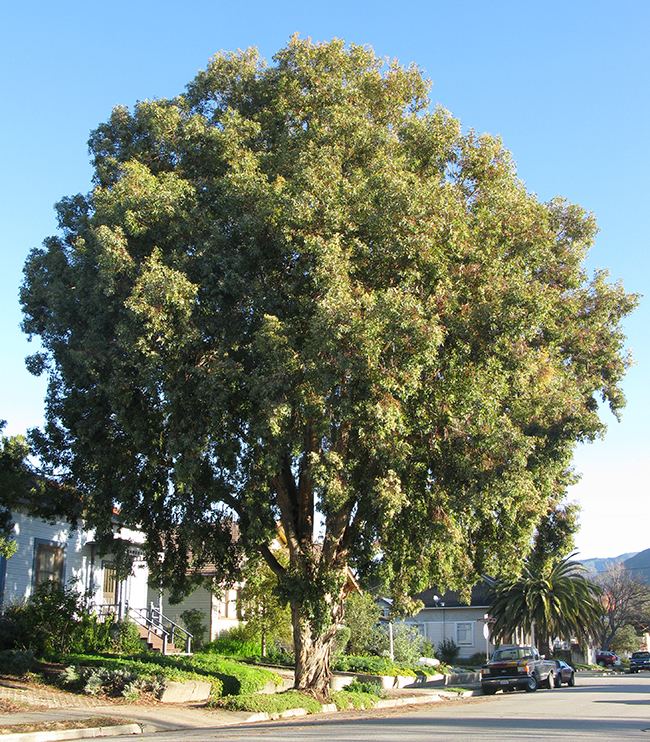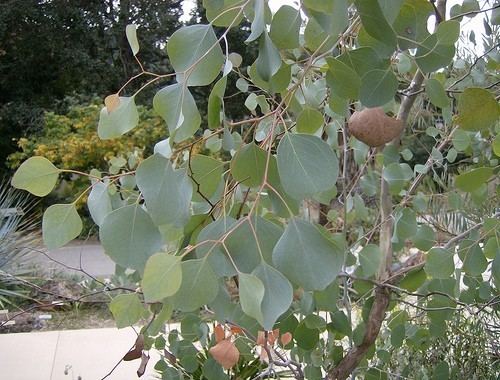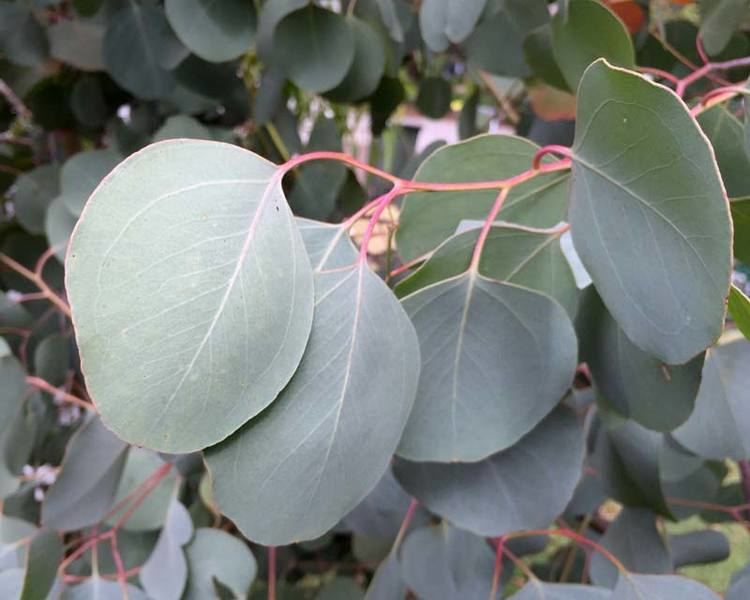Rank Species | Genus Eucalyptus Higher classification Gum trees | |
 | ||
Similar Gum trees, Eucalyptus melliodora, Eucalyptus macrorhyncha, Eucalyptus sideroxylon, Eucalyptus goniocalyx | ||
Eucalyptus polyanthemos, commonly known as Red Box, is a small to medium-sized tree, native to New South Wales, the Australian Capital Territory and Victoria in Australia. It is an introduced species in California where it is known as silver dollar gum, redbox or redbox gum.
Contents

Description

Red Box grows to between 7 and 25 metres, often with a crooked trunk and is noted for its domed canopy of greyish foliage. Bark may be smooth or fibrous and persistent.
The juvenile leaves are round and grey-green and the adult leaves are ovate and between 5 and 10 cm in length and 2 to 5 cm in width with long petioles. Veins on the leaves are distinct and the marginal vein is notably distant from the leaf edge.

Flower buds appear in groups of 3 to 7 and have small conical caps. The white flowers appear between September and January (early spring to mid summer) in the species native range, followed by pear-shaped fruits which are 4 to 7 mm long and 3 to 6 mm wide and have enclosed valves.
Taxonomy

The species was first formally described by German botanist Johannes Schauer in Repertorium Botanices Systematicae in 1843. This description was based on the type specimen which was collected by Allan Cunningham from Bathurst, New South Wales in 1822.
Four subspecies are listed in the Australian Plant Name Index:

Distribution
Red Box occurs in dry open forest south from Gulgong, New South Wales, including the central and southern tablelands and southward into central and eastern Victoria. Discrete populations occur in the upper Hunter Region and also in Gippsland. The species often appears in association with Red Stringybark (Eucalyptus macrorhyncha) or Red Ironbark (Eucalyptus tricarpa) or other box species. It is found on hillsides and in gullies on shallow soils derived from sedimentary rock or alternatively in open flat country on deep loam soils. It has been recorded as an invasive species in California
Ecology
The larvae of the moth species Trichiocercus sparshalli and the Eucalyptus Leaf Mining Sawfly Phylacteophaga froggatti feed on the leaves. Large, old trees may form hollows that are used as nests for owls including the Barking Owl (Ninox connivens).
Significant trees
A Red Box in Fraser National Park is recorded on the Significant Tree Register of the National Trust of Australia in Victoria. It is an unusual form with contorted limbs which is estimated to be around 80 years old and is 26.7 metres high.
In Gilmore in the Australian Capital Territory, a tree known as Murumbeeja Scarred Red Box No 1 is listed on the Register of the National Estate. It is a scarred tree, marking the removal by aborigines of bark, probably for canoe construction.
Cultivation
The species is noted for its drought tolerance. Although usually considered to be slow growing, newly planted trees may have their growth rate enhanced with improved soil, good drainage and irrigation in the first two years. The species is resistant to Armillaria root rot. A mininimum temperature of -10 °C (15 °F) is required for cultivation.
Uses
Red Box is used as an ornamental tree for street and park planting. The timber is red in colour and is strong, hard and durable. It has been used for fence posts, railway sleepers and firewood. The juvenile foliage is used in floral arrangements.
